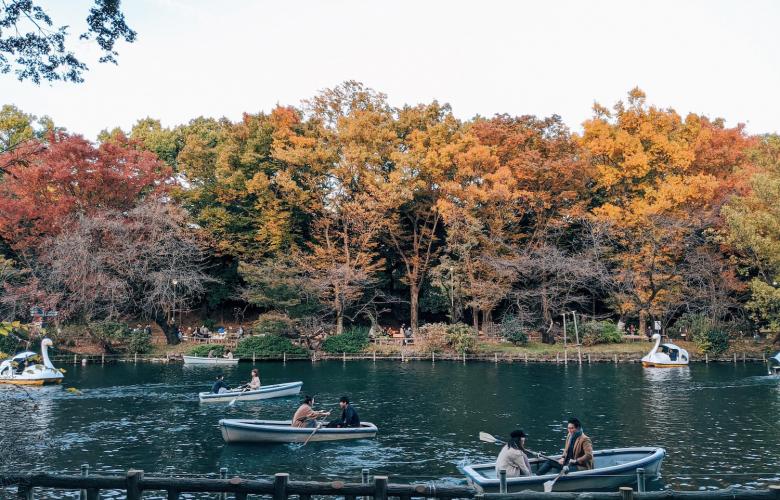Kichijoji is an old Tokyo neighbourhood founded in the Edo era when the area first developed into farm land thanks to the opening of an aqueduct. But despite its rural roots, Kichijoji has vastly transformed over the centuries into the suburban hot spot of today.
The area is named after the Indian goddess Lakshmi, or more precisely its Japanese Buddhist form: Kisshoten. The Kichijoji Temple, originally located in Bunkyo ward, was devoted to the deity, but lost in a fire. The local population was displaced after the disaster and named the area Kichijoji Village to honour their beloved goddess and her namesake temple.
Location: Farther out but well connected
Kichijoji (吉祥寺) is a well-established neighbourhood located in Musashino City. Anything outside the 23 special wards of Tokyo proper is not usually a desirable address, but Kichijoji is the notable exception. This is partly due to the fact that it's extremely well connected with direct train lines to both Shinjuku and Shibuya. Both stations are only a 15-minute ride away via express train — which admittedly can get rather crowded. Kichijoji is serviced by the Chuo, Sobu, Tozai, and Keio Inokashira Line — meaning good access to Tokyo, Akihabara, and Otemachi.
Lots of green space
Kichijoji boasts lots of greenery and old-world charm with traditional houses and roads wider and quieter than the ones found in central Tokyo. The area around Inokashira Park and Kichijoji Station are a dense maze of narrow alleys with a bohemian flair. The neighbourhood is also known for its many jazz bars and live houses. But as soon as you leave the touristy heart of the district, the roads become wider and take on a more laid-back vibe, leaving more room to breath than central Tokyo neighbourhoods. This makes it a favourite among foreign and Japanese families alike, as well as of young people and students.
The neighbourhood's crowning glory is Inokashira Park, famous for its picturesque lake peppered with swan boats, as well as a small zoo. Besides being a popular cherry blossom spot in the spring, the park is also the source of Kanda River that flows through Tokyo. It was officially opened as the Inokashira public park in 1917, but its history as a landscaped green space dates back to the Edo era.
The park is not the only green space in the area. A number of Shinto shrines that hold summer festivals and Gesso-ji Temple are alternative spots of tranquility. The famous Ghibli Museum (set in a park arrangement) is also located in the area.
All the urban amenities
Despite its location in suburbia, Kichijoji went through a growth and development spurt in the last couple of years and now sports shopping and dining options that rivals those of downtown Tokyo. The station complex houses a large Atre shopping mall — with a Tokyu mall is close proximity. Sun Road is a Showa era–style shopping street that gets quite busy on weekends with visitors from Tokyo. It is lined with mom-and-pop shops, fashion stores and small restaurants.
Dining is also a big draw of Kichijoji. Famous for both its local and international cuisine that range from French to Italian, yakitori to kaiseki, it is a foodies' paradise that caters to every budget.
Affordable but not cheap
Kichijoji is popular — and realtors are well aware. This makes it an outlier and pricier than properties in other Tokyo areas outside the 23 wards and even the neighbouring districts in Musashino City. Still, both apartments and detached houses in Kichijoji command rents that are about 40% cheaper than those in Minato ward, the most expensive of all of Tokyo’s neighbourhoods.
From an investment point of view, it is unlikely that Kichijoji will lose its popularity. For several years in a row, it has been voted the most desirable neighbourhood in Tokyo by Tokyo Walker magazine. It also topped online real estate platform SUUMO’s poll for the most popular place to live in Tokyo in 2017. And with the recent redevelopment projects around the station that expanded shopping and dining options even further without infringing on the older, charming parts of the neighbourhood, not to mention its superb train connections, Kichijoji presents the perfect mix of quaint and convenient.
By Mareike Dornhege
Similar to this:
Chiyoda area guide: Japan’s centre of political power
Chuo area guide: Ginza, Tsukiji and reclaimed land
Six of Tokyo's best foodie neighbourhood





